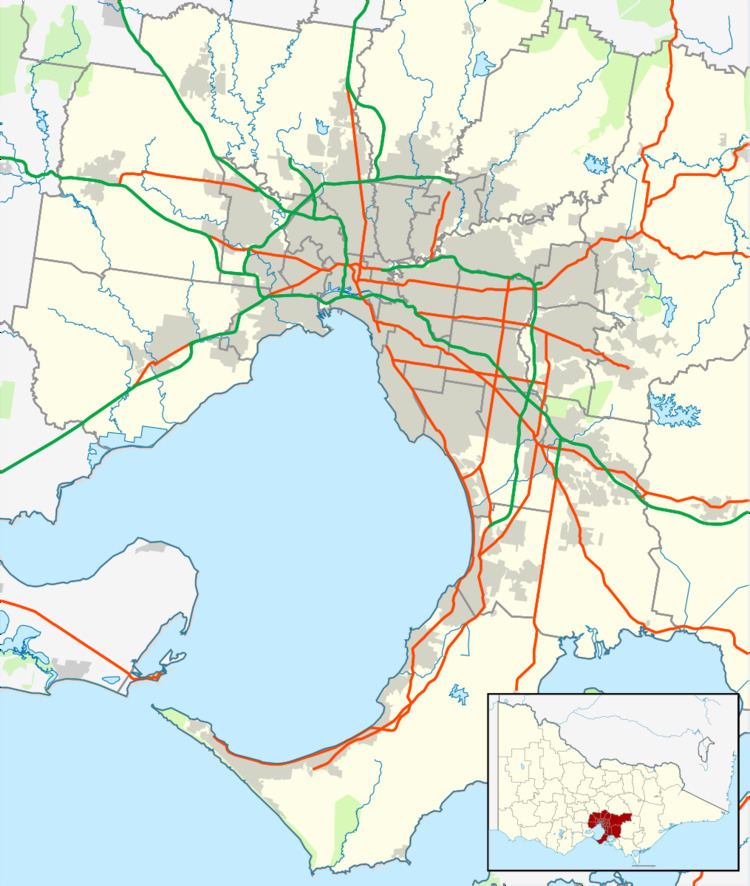Airport type Military Elevation AMSL 14 ft / 4 m 1,137 3,730 Elevation 4.3 m | 04/22 1,137 | |
 | ||
Operator | ||
Raaf williams autumn ball 2013
RAAF Williams (ICAO: YMPC) comprises the two bases of Point Cook and Laverton, on the outskirts of Melbourne, Victoria. Both establishments previously existed as separate RAAF Bases (RAAF Base Point Cook and RAAF Base Laverton) until 1989 when they were amalgamated to form RAAF Williams. The name was chosen in honour of Air Marshal Sir Richard Williams, the 'father' of the Royal Australian Air Force.
Contents
- Raaf williams autumn ball 2013
- RAAF Williams Point Cook Base
- RAAF Williams Laverton Base
- Other activities
- Werribee Satellite Aerodrome
- References
RAAF Williams Point Cook Base
Point Cook was purchased by the government in 1912 with the vision to form what would become the Australian Flying Corps. Due to the success of the AFC in the First World War, the AFC became a separate service, the Royal Australian Air Force. Point Cook remained the RAAF's only base until 1925 when RAAF Base Richmond and RAAF Base Laverton were also built.
Point Cook is considered the birthplace and the spiritual home of the RAAF. It is also the airport at which the Royal Victorian Aero Club was established. It contains a memorial parade ground which was built in the 1920s, a site which was previously used by the AFC for drill training. Point Cook still has an operating airfield, but military operations are generally restricted to the museum based there. The airfield is used by a number of general aviation users, although it is still classified as a military aerodrome. It is the oldest continuously operating military aerodrome in the world. Radio communication frequencies include CTAF on 126.2 MHz. The airfield NDB is inactive.
RAAF Williams Point Cook base is the former home of the RAAF College including Officer Training School (OTS) and the RAAF Academy from 1961 to 1985, and is currently used for the Air Force element of the Australian Defence Force Gap Year Program. The RAAF Museum is also located there. All administrative functions are located at the Laverton base, and there is a single mess service (Officers Mess Annexe) which provides a meal service to all personnel, and a bar service to Gap Year students only.
RAAF Williams Laverton Base
Laverton is the third oldest RAAF base, being built in 1925 at the same time as RAAF Base Richmond, which was opened slightly before Laverton. Laverton is the home of Headquarters Air Force Training Group (formerly Training Command). It also contains all the administrative functions of RAAF Williams. Other units at Laverton are the ADF School of Languages, Defence International Training Centre (DITC), Director General Technical Airworthiness, No. 21 (City of Melbourne) Squadron (RAAF Active Reserve) and a number of smaller sub-units. It also hosts an element of 8th/7th Battalion of the Royal Victoria Regiment, Australian Army Reserve, as well as elements of the Defence Materiel Organisation (DMO).
In 1946 Laverton played host to the first flight of the newly formed Trans Australia Airlines, its DC3 VH-AES 'Hawdon' forced to use the airbase as operations at Essendon had become adversely affected by recent heavy rains. The base hosted the shotgun portion of the shooting events for the 1956 Summer Olympics.
Laverton's runway was decommissioned September 1996. In early 2007 the Victorian State Government gave approval for the land that was formally the Laverton airfield and runway to be developed into the new suburb of Williams Landing. Three areas totalling 55 hectares (136 acres) have been set aside for conservation. There is over 100 ha (247 acres) of nationally significant native grassland outside the reserves allowed to be cleared by the state and federal government. Williams Landing will be developed into a Transit-oriented development, major activity centre and employment node. As well as being a major activity centre and employment node, there will also be four residential neighbourhoods each with their own distinctive character. Construction of Williams Landing commenced in late 2007 and is due for completion by 2025.
Other activities
The 1948 Australian Grand Prix was held on a racetrack mapped out on the runways and support roads of the Point Cook airfield. The race was won by Frank Pratt driving a BMW 328.
The RAAF Museum is located at Point Cook and has a large collection of ex-RAAF aircraft and personnel from the prewar years until recent decades. It can be visited by the public on several days per week.
RMIT University's flight training courses are conducted at its private facility located on the base.
Between 2005 and 2007 Laverton and Point Cook were used by the Victorian Brigade, Australian Army Cadets, to conduct promotion courses whilst the usual site of Puckapunyal was being refurbished. In December 2008 the Australian Army Cadets Senior Leaders (Sergeant & Staff Sergeants) Course was held at Laverton.
Werribee Satellite Aerodrome
Land was set aside by the Commonwealth Government west of the Williams bases from 1940 to 1952 for a spare grass airfield and aircraft storage. Several hangars and accommodation buildings were built in 1942 in the style of US hangars by the United States Army Air Forces. The USAAF left in 1945. The land was part of what is now the Western Treatment Plant.
Two hangars remain on the land. The northern-most hangar on Geelong Road near Farm Rd now houses a former RAAF Consolidated B-24 Liberator under restoration by the B-24 Liberator Memorial Restoration Fund.
